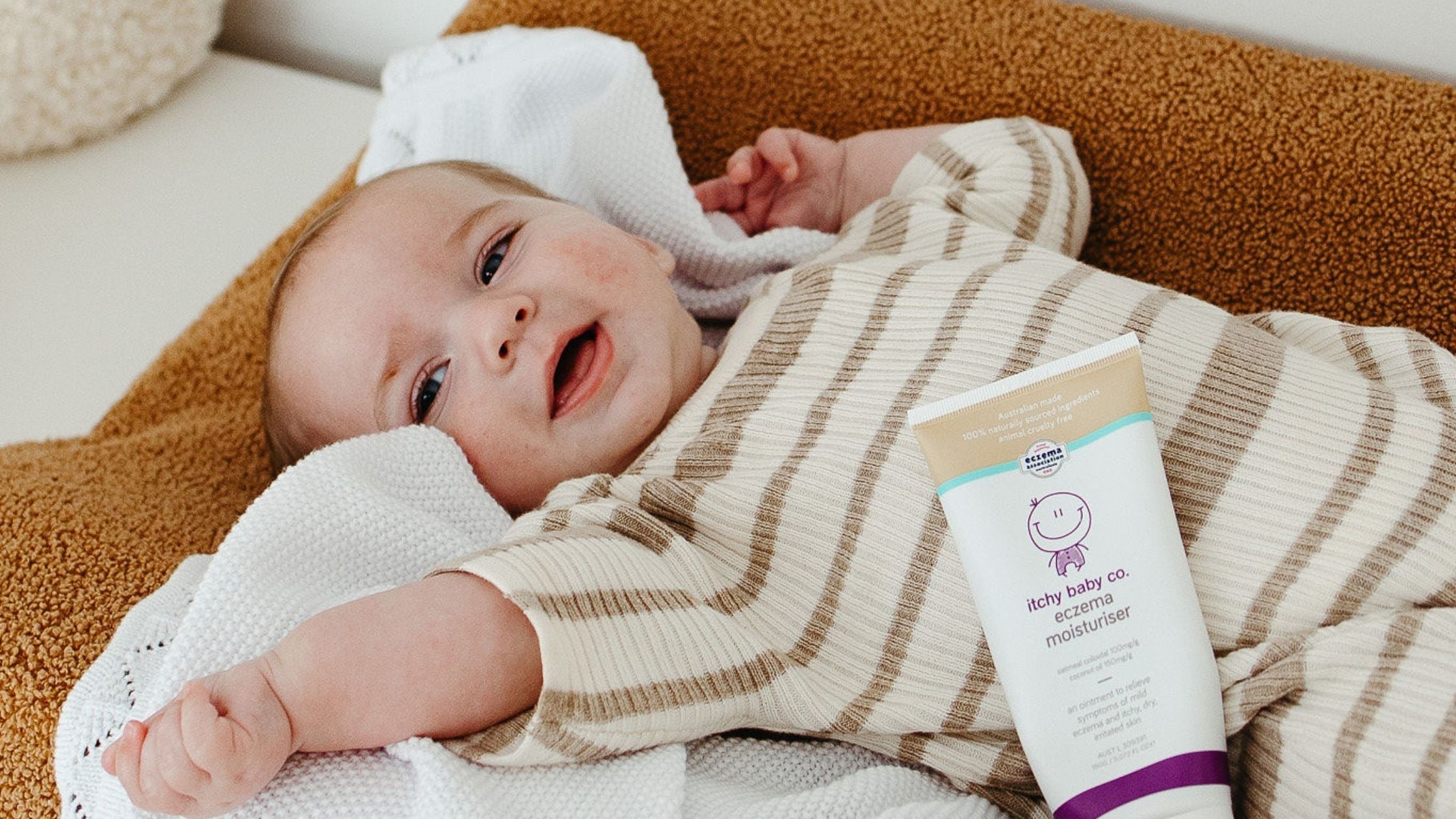Breaking the Eczema Itch-Scratch Cycle

Breaking the Eczema Itch-Scratch Cycle
Have you ever felt that feeling of relief after scratching an itch, only for it to return even itchier than before? This is a common experience in those struggling with eczema, and can be a huge source of discomfort. Itchy skin can cause our little ones to become unsettled, disrupt their sleep, and trap them in a feedback loop known as the ‘itch-scratch cycle’.
What is the eczema itch-scratch cycle?
The eczema ‘itch-scratch cycle’ refers to the process by which skin becomes itchy, causing us to scratch, which then damages the skin and triggers further itching. The act of scratching can create a perpetual cycle of inflammation and itchiness that can worsen eczema and cause more damage to the skin over time. This is why it’s so important to do what we can to prevent our children’s skin from feeling itchy and encourage them not to scratch, as hard as that can be!

A diagram illustrating the itch-scratch cycle and how it can affect those with eczema.
How does scratching damage the skin?
Scratching itchy skin might provide a temporary feeling of relief at first, but repeated episodes of scratching can cause the skin to become inflamed, or it can even lead to bleeding and broken skin. When the skin is broken, it can leave it more vulnerable to pathogens, irritants and allergens. This can result in infections or skin reactions that can make the area itchier or exacerbate eczema.
In cases where someone has repeatedly scratched an area of skin, it may result in lichenification, characterised by thickened skin that can appear lighter or darker than normal skin. This condition may take weeks or months to heal. Repeatedly scratching and reopening broken skin can also lead to scarring in some cases.
How to break free from the eczema itch-scratch cycle
Avoid triggers
If you or your little one is stuck in the itch-scratch cycle, a crucial step is to identify what is causing the skin to feel itchy. Dry skin is a common trigger, which is why it’s essential to maintain your daily moisturising skincare routine. There are many other potential triggers, including dust mites, pollen, pet fur, rough fabrics, certain soaps or skincare products, cleaning products, and other allergens. Even quick changes in temperature or sweating can cause eczema-prone skin to feel itchy. Once you identify what triggers the itch, try to avoid it as much as possible.
Soothe the itch
Eczema-prone skin often feels itchy, so it’s vital to have help on hand to soothe the itch when it strikes.
First, work with your doctor or a medical professional to develop an eczema management plan tailored to your child's needs. They may recommend specific treatments or medications to help control itching and break the cycle of scratching and skin damage. There are some other methods that can be done alongside conventional treatments, such as:
-
Colloidal oatmeal baths: Itchy Baby Co. Natural Oatmeal Bath Soak makes it quick and easy to treat your little one to a soothing oatmeal bath. Oatmeal contains phenols, which have antioxidant and anti-inflammatory properties to help reduce itching and irritation. Simply add a small amount to your child’s bath and let them soak up the goodness.
-
Moisturising regularly: Applying and reapplying moisturiser is vital to keep the skin from drying out and becoming itchy. Itchy Baby Co. Eczema Moisturiser was made specifically to provide long-lasting moisture, thanks to its waterless formula rich in nourishing ingredients such as oatmeal, coconut oil, and shea butter. It also creates a barrier on the skin to slow down water loss and protect against environmental triggers.
-
Opting for soft, breathable clothing: Dressing your little one in soft, breathable clothing (such as 100% cotton) can help them stay cool, be less sweaty, and experience less itching.
-
Cool compresses: If your little one is experiencing a flare-up, gently pressing a cool, damp cloth onto the affected area can help soothe the itch. This simple trick can be beneficial on warm days to cool the skin or when a specific spot becomes extra itchy after exposure to a known trigger.
Minimise damage
If your little one is scratching, try to minimise skin damage by keeping their nails cut short and perhaps using soft mittens on their hands while they sleep. Less broken skin means a lower chance of infection and further irritation from exposure to environmental triggers.
Breaking the itch-scratch cycle can be challenging for our little ones, but with consistent skincare, avoiding known triggers, and doing what we can to ease the itch, we’re helping to nurture calmer, healthier skin one day at a time.
This blog post was brought to you and your family with love from the Itchy Baby Co. team x.
Disclaimer: Information provided is of a general nature only, and you should always consult your medical professional.





